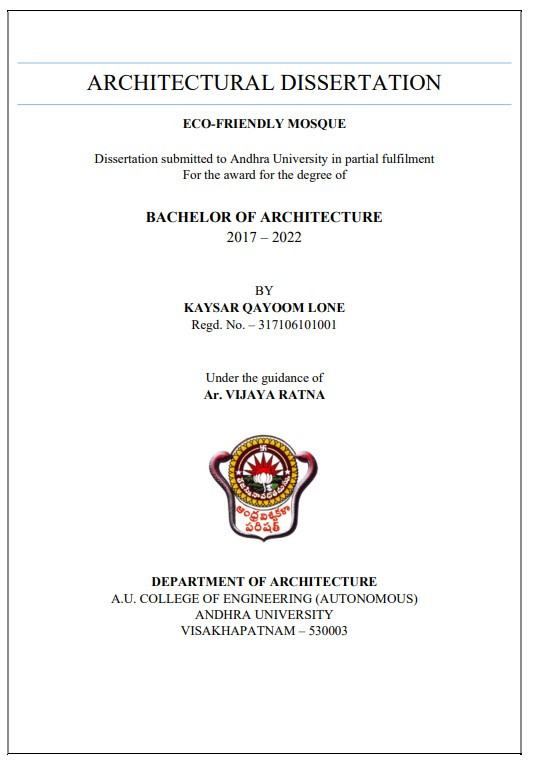
The dissertation focuses on the design of an eco-friendly mosque that serves as a pivotal community space while addressing environmental concerns in architecture. It aims to improve thermal performance through passive cooling systems, utilize sustainable building materials, and foster a healthy indoor environment. With the growing challenge of climate change and pollution largely linked to the construction sector, the study emphasizes the need for innovative architectural solutions that prioritize sustainability, while reinforcing the mosque’s role in promoting eco-stewardship within the Muslim community.
Lone, Kaysar Qayoom, ‘Eco-Friendly Mosque’, Unpublished Thesis, Andhra University, Visakhapatnam, India, 2020.
I agree to the terms outlined below:
You agree to upload and assign Mosqpedia Database the rights to use the content worldwide and in perpetuity across all current and future media platforms. Mosqpedia Database may edit, copy, adapt and translate your contribution.
The content will be distributed under the Creative Commons Attribution-Deed – Attribution-NonCommercial-NoDerivatives 4.0 International – Creative Commons
All data will be stored in line with data protection regulations.